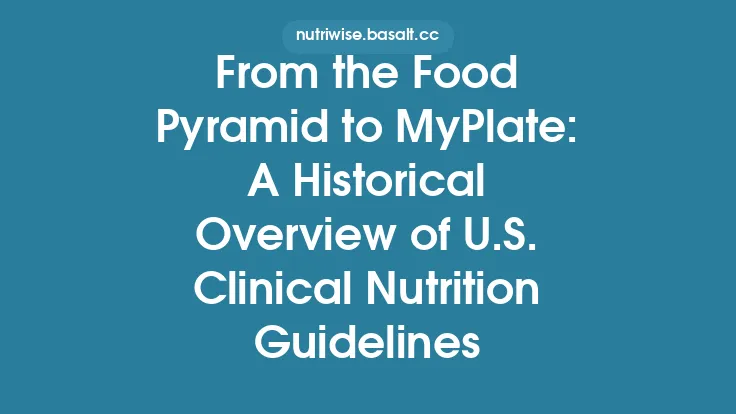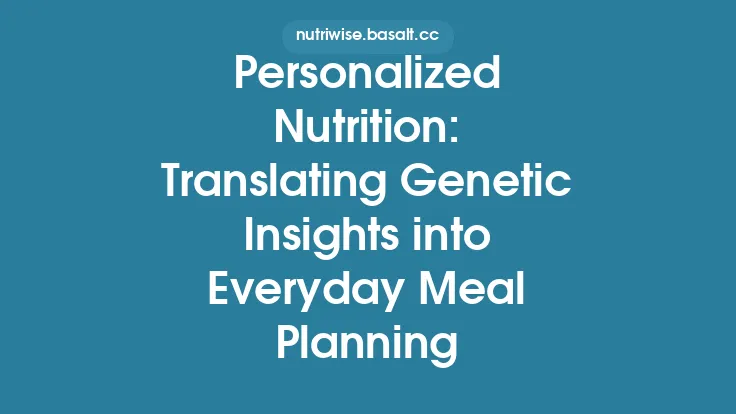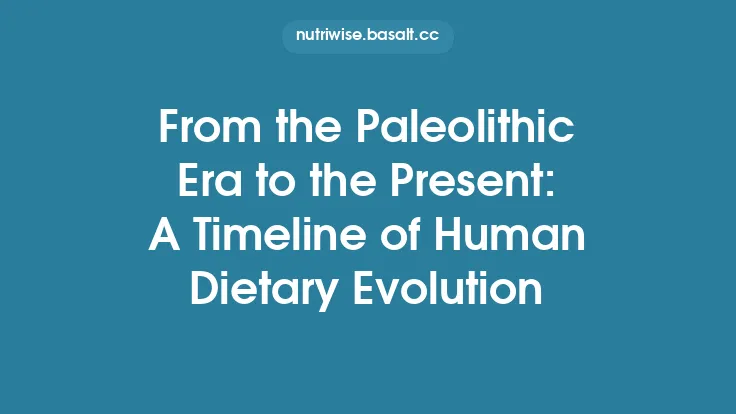From the moment a single cell divides, the DNA it carries begins to shape how that individual will process, store, and respond to the foods they eat. Modern nutrigenomics has moved beyond the simple “you have a gene for …” narrative and now offers a systematic framework for turning raw genetic data into a practical, day‑to‑day nutrition plan. This article walks through the essential components of that framework, outlining how researchers and practitioners can move from a genome sequence to a concrete, personalized nutrition blueprint that remains relevant as science evolves.
Understanding the Genetic Foundations of Nutrition
The human genome encodes thousands of proteins that act as enzymes, transporters, receptors, and regulators of metabolic pathways. When it comes to nutrition, several broad categories of genes are most influential:
| Gene Category | Primary Function | Representative Genes |
|---|---|---|
| Macronutrient Metabolism | Catalyze breakdown and synthesis of carbohydrates, fats, and proteins | *LCT, FADS1/2, APOA2, PPARG* |
| Nutrient Transport & Absorption | Mediate intestinal uptake of vitamins, minerals, and lipids | *SLC2A2 (GLUT2), SLC5A1 (SGLT1), NPC1L1* |
| Energy Expenditure & Thermogenesis | Influence basal metabolic rate and adaptive thermogenesis | *UCP1, UCP2, ADRB3* |
| Hormonal Regulation | Modulate appetite, satiety, and insulin signaling | *LEP, LEPR, GHRL* |
| Detoxification & Xenobiotic Processing | Process dietary phytochemicals, caffeine, and other bioactives | *CYP1A2, CYP2C19, GSTT1* |
These gene families provide the scaffolding for a nutrition blueprint. By identifying which variants an individual carries, we can predict relative strengths and vulnerabilities in metabolic pathways, which in turn informs dietary recommendations that are more likely to be effective and sustainable.
Key Gene Variants Influencing Macronutrient Processing
While the genome contains millions of single‑nucleotide polymorphisms (SNPs), a subset has been repeatedly associated with measurable differences in how nutrients are handled. Below are some of the most robustly validated variants, along with the practical implications for diet design.
1. FADS1/2 (Fatty Acid Desaturase)
- Variant Example: rs174537 (C > T)
- Effect: Alters conversion efficiency of short‑chain omega‑3 (ALA) to long‑chain EPA/DHA.
- Implication: Individuals with the “low‑conversion” allele may benefit from direct EPA/DHA sources (e.g., fatty fish, algae oil) rather than relying on plant‑based ALA.
2. APOA2 (Apolipoprotein A‑II)
- Variant Example: rs5082 (C > T)
- Effect: Modulates post‑prandial triglyceride response to saturated fat.
- Implication: Carriers of the “high‑response” allele may experience larger triglyceride spikes after high‑saturated‑fat meals, suggesting a diet lower in saturated fat or richer in monounsaturated fats.
3. PPARG (Peroxisome Proliferator‑Activated Receptor Gamma)
- Variant Example: rs1801282 (Pro12Ala)
- Effect: Influences adipocyte differentiation and insulin sensitivity.
- Implication: The Ala12 variant is linked to improved insulin sensitivity; individuals with the Pro12 allele may respond better to diets higher in polyunsaturated fats and lower in refined carbohydrates.
4. CYP1A2 (Cytochrome P450 1A2)
- Variant Example: rs762551 (A > C)
- Effect: Determines caffeine metabolism speed.
- Implication: “Fast” metabolizers (AA) can tolerate higher caffeine without adverse cardiovascular effects, whereas “slow” metabolizers (CC) may need to limit intake.
5. SLC2A2 (GLUT2)
- Variant Example: rs5400 (G > A)
- Effect: Impacts glucose transport across the intestinal epithelium.
- Implication: Certain alleles are associated with altered glycemic response to carbohydrate‑rich foods, guiding carbohydrate quality and timing choices.
These examples illustrate how a handful of well‑studied SNPs can already inform macro‑level dietary decisions. Importantly, the effect sizes are modest; the blueprint should be viewed as a probabilistic guide rather than a deterministic prescription.
From Raw Data to Actionable Insights: Interpreting Your Genetic Report
A typical nutrigenomic test returns a CSV or PDF containing thousands of SNPs, each annotated with a genotype (e.g., AA, AG, GG) and a brief interpretation. Turning this data into a coherent nutrition plan involves several systematic steps:
- Data Cleaning & Quality Assurance
- Verify that the genotyping platform meets a minimum call rate (≥ 98%).
- Exclude SNPs with low minor allele frequency (< 1%) in the relevant population, as their predictive power is limited.
- Prioritization of Clinically Relevant Variants
- Use a curated list of nutrigenomic markers (e.g., the 100‑gene panel endorsed by the International Society of Nutrigenomics).
- Assign a weight to each variant based on effect size, replication status, and relevance to the individual’s health goals.
- Polygenic Scoring
- For complex traits like lipid metabolism, aggregate multiple SNPs into a polygenic risk score (PRS).
- PRS provides a single metric that can be compared against population percentiles, aiding risk stratification.
- Contextual Integration
- Overlay genetic findings with phenotypic data (BMI, blood lipids, fasting glucose) and lifestyle information (physical activity, sleep, stress).
- This step is crucial because genetics explains only a fraction of inter‑individual variability.
- Recommendation Mapping
- Translate each prioritized variant into a concrete dietary recommendation (e.g., “Increase EPA/DHA intake by 250 mg/day”).
- Use evidence‑based decision trees that incorporate both genotype and phenotype.
- Documentation & Communication
- Produce a concise report that lists actionable items, the underlying genetic rationale, and confidence levels.
- Include a “next steps” section for monitoring and potential re‑assessment.
By following this pipeline, practitioners can avoid the pitfalls of over‑interpretation and ensure that recommendations are both scientifically grounded and personally relevant.
Integrating Phenotypic and Lifestyle Information
Genetic data alone cannot dictate a complete nutrition plan. The most robust blueprints emerge from a holistic view that blends genotype with observable traits and daily habits.
| Dimension | Data Sources | How It Refines the Blueprint |
|---|---|---|
| Anthropometry | Height, weight, waist circumference, body composition (DXA, BIA) | Adjust macronutrient ratios to align with lean mass vs. fat mass distribution. |
| Biochemical Markers | Lipid panel, fasting glucose, HbA1c, vitamin D, iron status | Validate genetic predictions (e.g., high triglyceride response) and identify compensatory needs. |
| Physical Activity | Wearable step counts, VO₂ max, training logs | Tailor carbohydrate timing and protein distribution to match energy expenditure. |
| Sleep & Stress | Actigraphy, cortisol measurements, self‑report scales | Influence appetite hormones (leptin, ghrelin) and thus inform meal frequency. |
| Dietary History | 24‑hour recalls, food frequency questionnaires, diet diaries | Identify current nutrient gaps and habitual patterns that may interact with genetic predispositions. |
For instance, a person with a high‑risk APOA2 allele who also exhibits elevated fasting triglycerides and a sedentary lifestyle would receive a more aggressive recommendation to limit saturated fat and increase omega‑3 intake, coupled with an exercise plan aimed at improving lipid clearance.
Designing a Personalized Nutrition Blueprint
With the genetic, phenotypic, and lifestyle layers assembled, the next step is to construct a concrete, user‑friendly blueprint. The following structure has proven effective in both research settings and clinical practice:
- Macro‑Nutrient Distribution
- Carbohydrates: 45–55 % of total energy, emphasizing low‑glycemic index sources if SLC2A2 variants suggest heightened glucose sensitivity.
- Proteins: 20–30 % of total energy, with emphasis on high‑biological‑value sources (e.g., whey, legumes) for individuals carrying PPARG variants linked to insulin sensitivity.
- Fats: 25–35 % of total energy, with a focus on monounsaturated and omega‑3 polyunsaturated fats for APOA2 and FADS1/2 carriers.
- Food‑Specific Recommendations
- Omega‑3 Sources: Fatty fish (2–3 servings/week) or algae oil supplements for low‑conversion FADS1/2 alleles.
- Saturated Fat Limits: < 7 % of total calories for high‑response APOA2 carriers.
- Caffeine Intake: ≤ 200 mg/day for slow CYP1A2 metabolizers; up to 400 mg/day for fast metabolizers, contingent on tolerance.
- Meal Timing & Distribution
- Align carbohydrate intake with periods of higher physical activity for those with glucose transport variants.
- Consider a protein‑rich breakfast for individuals with PPARG variants to improve satiety and glycemic control.
- Supplementation Guidance
- Vitamin D: If genetic testing reveals *VDR* polymorphisms associated with reduced receptor efficiency, a modest increase in vitamin D3 (e.g., 2,000 IU/day) may be warranted, pending serum levels.
- Magnesium: For *TRPM6* variants linked to reduced absorption, a daily 200–300 mg magnesium citrate supplement can be considered.
- Behavioral Strategies
- Use habit‑stacking techniques to embed nutrient‑dense foods into existing routines (e.g., adding chia seeds to morning oatmeal).
- Implement self‑monitoring tools (digital food logs, biometric dashboards) to track adherence and physiological response.
- Feedback Loops
- Schedule quarterly reassessments of blood lipids, glucose, and body composition.
- Adjust macro ratios and food choices based on observed trends, ensuring the blueprint remains dynamic.
By presenting the plan in a modular format—macros, food choices, timing, supplements, behavior—the individual can prioritize changes that fit their lifestyle while still addressing the genetic insights.
Tools and Platforms for Blueprint Development
A growing ecosystem of software solutions helps translate raw genetic data into actionable nutrition plans. While many platforms overlap in functionality, a few key capabilities differentiate the most effective tools:
- Automated Variant Annotation – Integration with databases such as dbSNP, ClinVar, and the Nutrigenomics Knowledgebase to provide up‑to‑date effect sizes.
- Polygenic Scoring Engine – Built‑in algorithms that calculate PRS for lipid metabolism, carbohydrate response, and fatty acid synthesis.
- Phenotype Integration Module – Ability to import lab results (via HL7 or CSV) and wearable data (via APIs from Fitbit, Apple Health) for holistic analysis.
- Decision‑Support Ruleset – Evidence‑based rule libraries that map genotype‑phenotype combinations to specific dietary actions.
- User‑Facing Dashboard – Visualizations (heat maps, trend graphs) that make complex data understandable for non‑experts.
- Compliance & Security – HIPAA‑compliant data storage, encryption, and consent management to protect personal genetic information.
Practitioners can either adopt a commercial platform (e.g., Nutrigenomix Pro, GeneFood) or build a custom pipeline using open‑source tools (e.g., PLINK for genotype processing, R/Shiny for interactive dashboards). The choice depends on scale, budget, and the need for customization.
Monitoring, Feedback, and Iterative Optimization
A nutrition blueprint is not a static document; it evolves as the individual’s biology and circumstances change. Effective monitoring hinges on three pillars:
- Objective Biomarkers
- Blood Lipids: Total cholesterol, LDL, HDL, triglycerides every 3–6 months.
- Glucose Metrics: Fasting glucose, HbA1c, or continuous glucose monitoring (CGM) for those with glucose‑transport variants.
- Inflammatory Markers: hs‑CRP or IL‑6 to gauge response to dietary fat changes.
- Subjective Metrics
- Satiety Scores: Visual analog scales after meals to assess appetite regulation.
- Energy Levels: Daily logs of perceived vigor, especially after high‑fat or high‑protein meals.
- Digestive Comfort: Tracking bloating, gas, or stool consistency to catch unintended intolerances.
- Data‑Driven Adjustments
- Algorithmic Re‑scoring: Re‑calculate PRS when new GWAS data become available, ensuring the blueprint reflects the latest science.
- Adaptive Meal Planning: Use machine‑learning models that learn from the individual’s glucose or lipid responses to suggest meal tweaks in real time.
- Feedback Sessions: Quarterly consultations (in‑person or telehealth) to discuss trends, address barriers, and set new goals.
Through this cyclical process—measure, analyze, adjust—the blueprint remains aligned with the person’s evolving health status and scientific advancements.
Ethical, Legal, and Social Considerations
Deploying genetic information in nutrition counseling raises several non‑technical challenges that must be addressed proactively:
- Informed Consent: Clients should receive clear explanations of what the test can and cannot reveal, including the probabilistic nature of risk estimates.
- Data Privacy: Genetic data are uniquely identifying; robust encryption, limited data sharing, and transparent privacy policies are essential.
- Equity of Access: Cost barriers can exacerbate health disparities. Offering tiered pricing, insurance reimbursement pathways, or community‑based testing programs can improve inclusivity.
- Psychological Impact: Knowledge of genetic risk may cause anxiety. Providing counseling resources and framing information in a strengths‑based manner helps mitigate distress.
- Regulatory Landscape: In many jurisdictions, nutrigenomic testing falls under the purview of clinical laboratories (CLIA‑certified) or direct‑to‑consumer regulations. Practitioners must stay current with local requirements.
By embedding ethical safeguards into the blueprint development workflow, professionals can foster trust and ensure responsible use of genetic insights.
Current Challenges and Future Directions
While the field has made impressive strides, several hurdles remain before personalized nutrition becomes routine for the broader public:
- Limited Effect Sizes – Most single‑gene effects are modest; integrating multiple variants into polygenic models is still an active research area.
- Population Diversity – The majority of GWAS data derive from European ancestry cohorts, limiting the applicability of current risk scores to other ethnic groups.
- Gene‑Environment Interactions – Lifestyle factors (e.g., chronic stress, sleep deprivation) can modulate genetic effects, yet quantitative models are nascent.
- Standardization of Reporting – Variability in how companies present genetic results hampers cross‑platform comparability.
- Longitudinal Evidence – Few large‑scale, randomized trials have tested whether nutrigenomic‑guided diets improve hard health outcomes (e.g., cardiovascular events).
Future research is poised to address these gaps through:
- Multi‑Omics Integration – Combining genomics with metabolomics, proteomics, and microbiome data to capture a more complete picture of nutrient metabolism.
- Artificial Intelligence – Deep learning models that can predict individualized post‑prandial responses based on a composite of genetic and phenotypic inputs.
- Global Consortia – Initiatives like the International Nutrigenomics Consortium aim to expand reference datasets across diverse populations.
- Regulatory Frameworks – Development of evidence‑based guidelines for nutrigenomic testing, akin to those for pharmacogenomics, to ensure quality and safety.
As these advances mature, the personalized nutrition blueprint will become increasingly precise, actionable, and universally applicable.
Closing Thoughts
Translating a genome into a plate is a multidisciplinary endeavor that blends molecular biology, clinical nutrition, data science, and behavioral psychology. By systematically interpreting genetic variants, contextualizing them with real‑world phenotypes, and constructing a flexible, evidence‑based plan, practitioners can empower individuals to make food choices that align with their unique biological makeup. While the science continues to evolve, the core principles outlined here—rigorous data handling, holistic integration, iterative monitoring, and ethical stewardship—provide a durable foundation for building personalized nutrition blueprints that stand the test of time.





